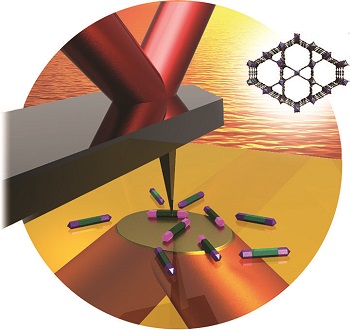Mar 25 2014
Anasys Instruments reports on a new publication from their nanoIR users at NIST which assess the chemical composition of a metal-organic framework with nanoscale resolution. The publication may be accessed in the leading journal “Angewandte Chemie International Edition.”

Researchers from the NIST Center for Nanoscale Science and Technology (CNST), in collaboration with researchers from University of Lyon, France, have applied a novel microscopy technique to characterize metal-organic framework (MOF) materials, potentially opening a pathway for engineering the chemical properties of these materials at the nanoscale.* MOFs are composed of metal ions connected by organic linker molecules to form 3D-crystalline networks of nanopores with extraordinarily high surface areas, leading to applications in catalysis, chemical separation, and sensing.
Most MOFs consist of just two types of building blocks, one metal ion and one organic linker. Recently, chemists have included mixtures of linkers in order to obtain and fine tune new chemical properties in the resulting structures, which are called MixMOFs. Until now, however, the limited resolution of conventional techniques has impeded progress in understanding MixMOFs sufficiently to optimize them for desired applications.
To overcome these limitations, the researchers used the nanoIR™ from Anasys Instruments, USA. Already in its second generation, this multi-functional platform combines the lateral resolution of atomic force microscopy (AFM) with the chemical specificity of infrared spectroscopy. The NIST researchers used the nanoIR to map the chemical composition of individual In-MIL-68 MixMOF micro-crystals with nanoscale resolution. According to Andrea Centrone, a Project Leader in the CNST’s Energy Research Group, “For the first time, we can take a look into MixMOF single crystals and map the distribution of the linkers. Understanding whether MOF crystals are homogenous or not is important for applications as homogeneity in the distribution of active sites within a crystal is a prerequisite for designing advanced catalytic materials.”
The researchers believe that the use of the AFM-IR technique will stimulate MixMOF research, and help scientists improve these materials for use in a range of applications.